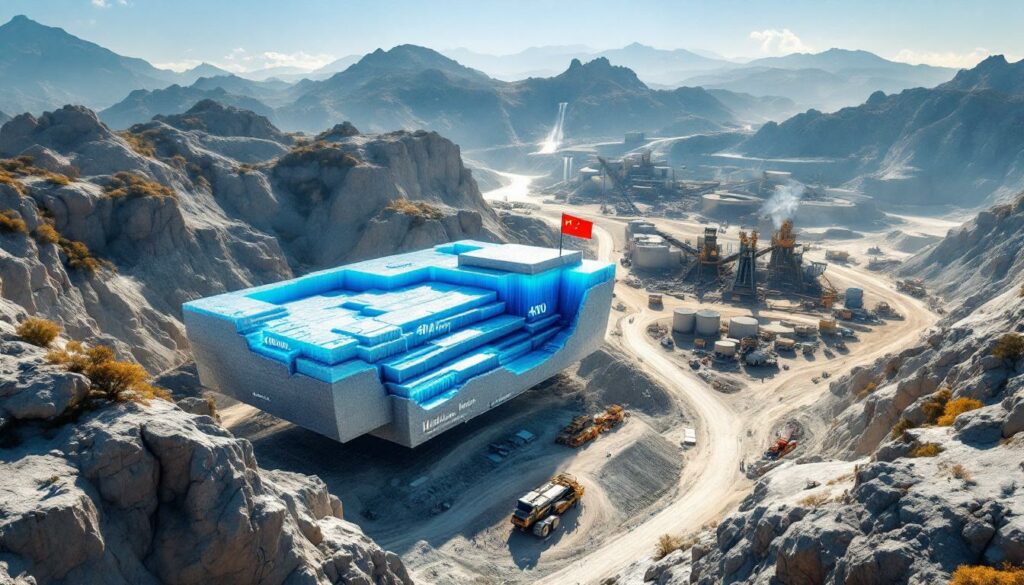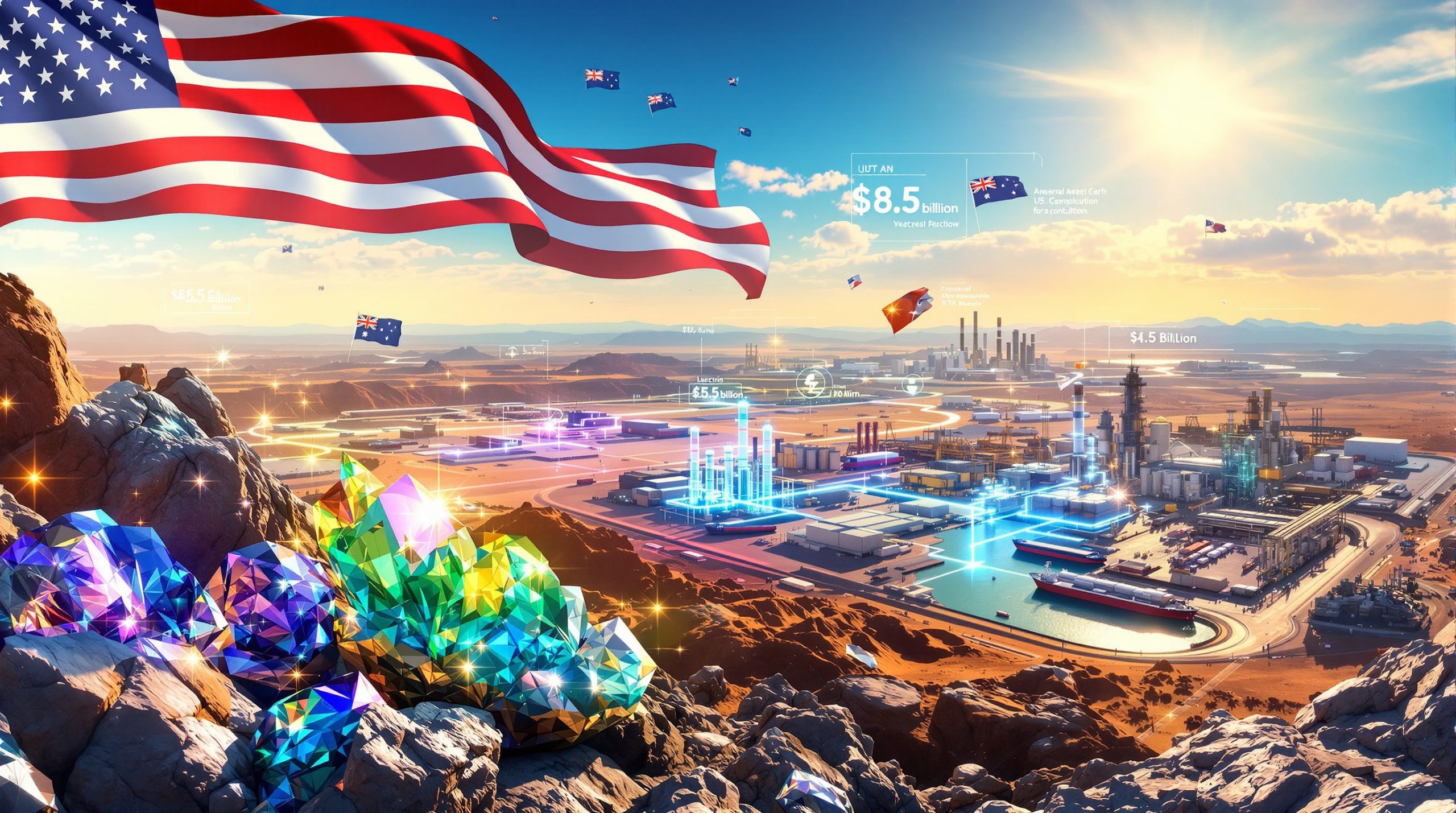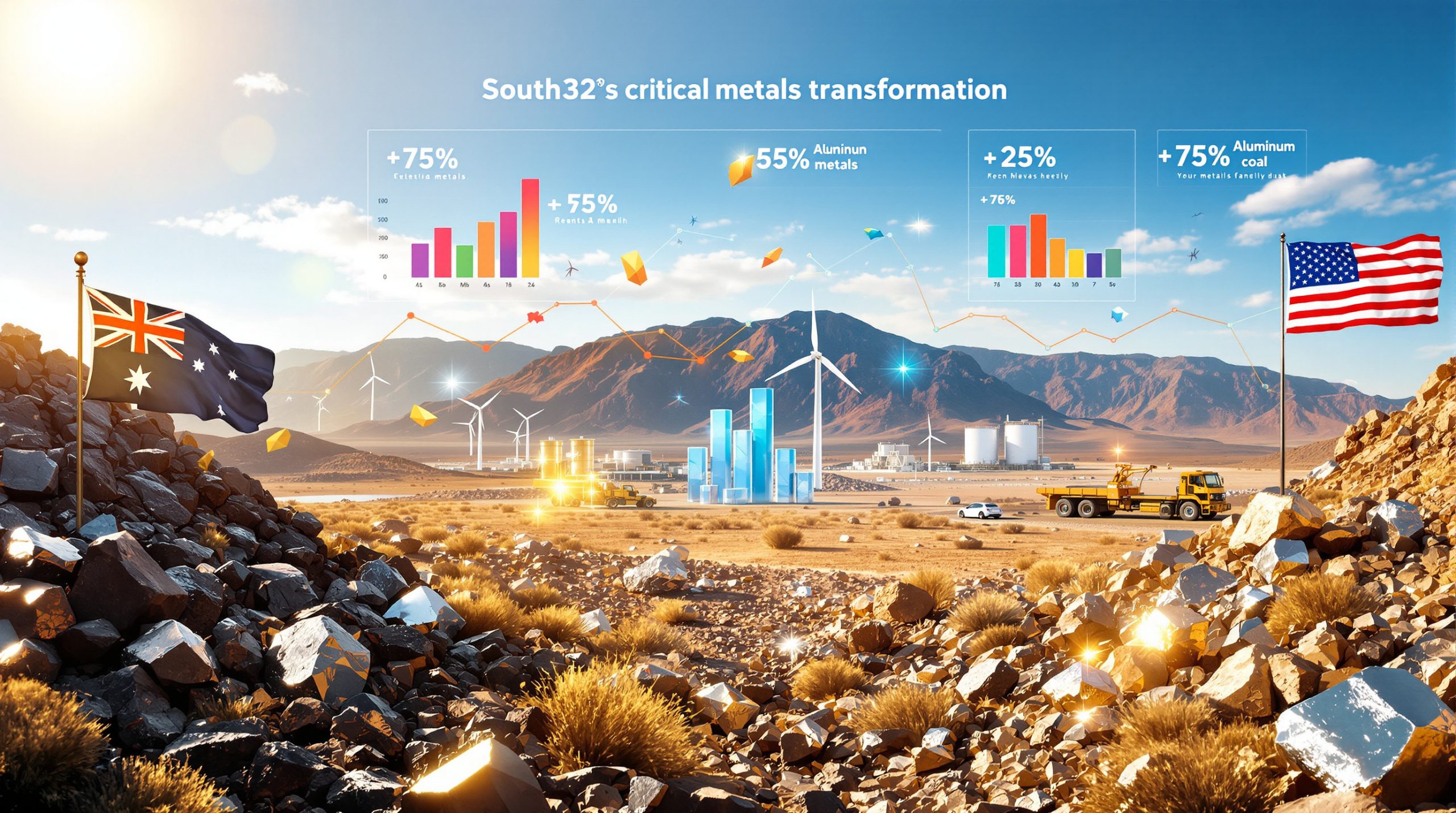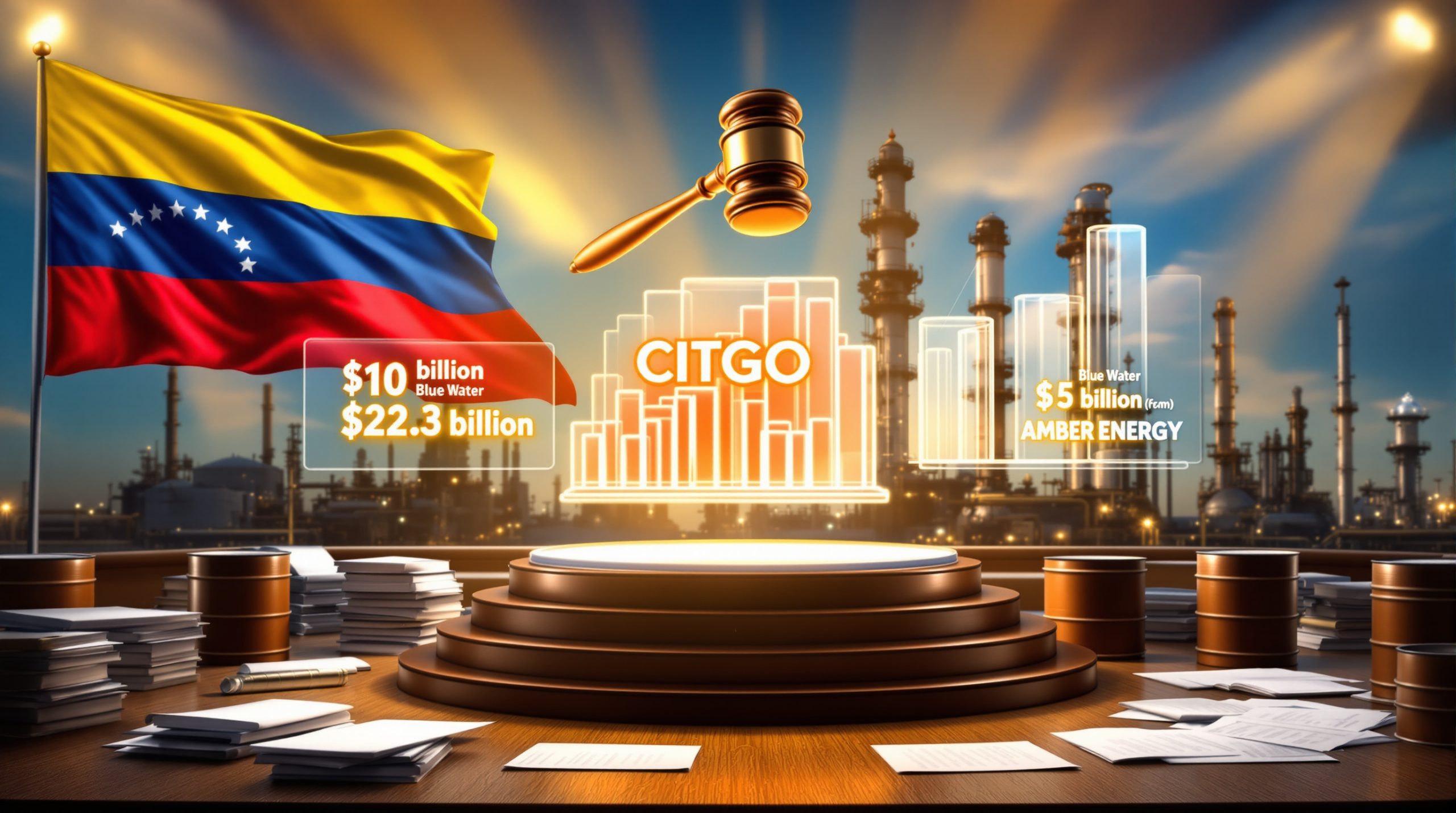What Is the Significance of China's New 490-Million-Tonne Lithium Discovery?
China's recent lithium discovery represents a monumental shift in global resource distribution, potentially reshaping the dynamics of the clean energy transition. The newly discovered deposit significantly strengthens China's position in the global lithium landscape amid intensifying competition for battery raw materials.
The Jijiaoshan Lithium Deposit: Key Facts and Figures
The Jijiaoshan lithium deposit, located in Linwu County of Hunan Province in central China, has emerged as one of the country's most significant mineral discoveries in recent years. After years of comprehensive geological surveys utilizing advanced exploration technologies, the Mineral Resources Survey Institute of Hunan Province identified this massive resource containing approximately 490 million tonnes of lithium ore.
The deposit contains an estimated 1.31 million tonnes of lithium oxide, placing it among the world's largest lithium discoveries. What makes this find particularly valuable is its classification as an altered granite-type lithium deposit, which offers specific extraction advantages compared to other lithium sources.
Beyond lithium, the Jijiaoshan deposit contains valuable secondary minerals including rubidium, tungsten, and tin, further enhancing its economic potential. These complementary resources create opportunities for multi-mineral extraction operations that could maximize the deposit's commercial value while distributing operational costs across multiple valuable outputs.
Professor Xu Yiming from the Mineral Resources Survey Institute notes that "the newly identified reserve will provide strategic resource security for the new-energy industry in Chenzhou," highlighting the deposit's importance for regional industrial development and supply chain resilience.
How Does This Discovery Impact China's Global Lithium Position?
China's Rising Lithium Reserves
The Jijiaoshan discovery fundamentally transforms China's standing in global lithium reserves. According to the China Geological Survey (January 2025), China's total lithium reserves now account for approximately 16.5% of global deposits, firmly establishing the country as the second-largest holder of lithium reserves globally, behind only Chile.
This represents a strategic shift in resource geography, as China previously relied heavily on lithium imports despite controlling over 70% of global lithium refining capacity. The discovery bridges a critical gap in China's battery materials supply chain by providing domestic raw material security for its dominant processing facilities.
The vertical integration of mining and processing capabilities creates a powerful combination that strengthens China's influence throughout the entire lithium value chain. With substantial domestic reserves now complementing its processing dominance, China has reduced a key vulnerability in its clean energy industrial strategy.
Strategic Importance for Regional Development
The Jijiaoshan discovery carries particular significance for Linwu County and the broader Chenzhou region, which are actively developing battery material production capabilities. The proximity of raw materials to processing facilities creates logistical advantages that could lower production costs and reduce carbon emissions associated with transportation.
This lithium reserve directly supports China's strategy for its "New Three" export items: electric vehicles, lithium batteries, and solar panels. These three sectors generated nearly $149 billion in exports for China in 2023, highlighting their economic importance. Securing domestic lithium supply helps insulate these growth industries from international supply disruptions or price volatility.
Local officials have already begun incorporating the lithium discovery into regional development plans, with preliminary infrastructure investments aimed at creating an integrated mining-to-manufacturing ecosystem. This approach mirrors successful resource-based industrial development models implemented elsewhere in China.
What Advantages Does This Ore Deposit Offer?
Extraction Benefits of Granite-Type Lithium
The Jijiaoshan deposit's classification as a granite-type lithium resource offers several distinct advantages compared to other lithium sources. The extraction process involves crushing the lithium-containing granite rock followed by specialized separation processes to isolate lithium oxide.
Unlike lithium deposits found in brine, where extraction occurs through evaporation in large basins, granite-type deposits allow for more controlled and consistent production. Processing can be carried out more quickly and cost-effectively, without the lengthy evaporation timelines typical of brine operations.
Another key advantage is production control—mining operations can adjust output volumes based on market demands rather than being constrained by environmental factors like weather conditions or evaporation rates that significantly impact brine operations.
The operational flexibility provided by hard rock lithium mining creates resilience against seasonal variations and climate impacts. While granite mining requires more energy for crushing and processing, the ability to maintain consistent production schedules offers considerable advantages for supply chain reliability and market responsiveness.
How Does China's Lithium Strategy Compare Globally?
China's Expanding Lithium Exploration
The Jijiaoshan discovery is just one component of China's comprehensive strategy to secure domestic lithium resources. Beyond this major find, China reported another significant lithium discovery in Yajiang, Sichuan Province in 2024, containing nearly one million tonnes of lithium.
Chinese geologists and mining engineers are also investigating Tibet's approximately 2,800 km long spodumene belt, which preliminary estimates suggest could contain up to 30 million tonnes of lithium. This systematic exploration program demonstrates China's long-term commitment to mineral self-sufficiency for critical battery materials.
These combined discoveries—Jijiaoshan, Yajiang, and the Tibetan exploration—represent a coordinated national effort to reduce dependency on foreign lithium sources while establishing resource security for China's rapidly expanding electric vehicle and energy storage sectors.
Global Competition for Battery Materials
China's strategic investments in upstream exploration and mining aim to secure domestic supply for its expanding electric mobility value chain. This approach stands in contrast to strategies employed by other major economies, which often focus on securing supply through international partnerships and investments rather than domestic production.
The country's dominant position in refining (70% of global capacity) combined with growing reserves creates powerful vertical integration throughout the battery supply chain. This integration gives China significant influence over global lithium markets and pricing dynamics that other nations struggle to match.
The Jijiaoshan discovery intensifies the global race to secure critical battery materials, potentially accelerating exploration and development activities in other lithium-rich regions. Countries like Australia lithium industry leaders, Chile, and producers with valuable Argentine lithium brine insights will likely respond with increased investment in both exploration and processing technologies to maintain competitive positions in the evolving battery materials landscape.
What Are the Extraction Methods for Different Lithium Deposits?
Comparing Lithium Extraction Techniques
The lithium industry utilizes several distinct extraction methods, each with specific advantages and challenges. Understanding these differences provides context for evaluating the Jijiaoshan deposit's strategic importance.
| Extraction Method | Source | Advantages | Challenges | Notable Examples |
|---|---|---|---|---|
| Hard Rock Mining | Granite/Spodumene | Faster processing, better production control | Energy-intensive crushing and processing | Jijiaoshan deposit (China), Greenbushes (Australia) |
| Brine Evaporation | Salt flats/lakes | Lower energy requirements, lower CO₂ emissions | Weather-dependent, lengthy process (12-18 months) | Salar de Atacama (Chile), Salar de Uyuni (Bolivia) |
| Clay Extraction | Lithium-rich clays | Potentially vast resources | Still developing commercially viable techniques | Thacker Pass (USA) |
| Direct lithium extraction | Various sources | Faster, smaller footprint | Higher technological requirements | Pilot projects globally |
The Jijiaoshan deposit's granite-type lithium requires hard rock mining techniques, where the lithium-containing rock is crushed and the lithium oxide extracted through separation processes. While more energy-intensive than some alternatives, this method provides crucial advantages in production consistency and operational control.
Unlike brine-based extraction, which requires extensive evaporation ponds and depends heavily on climate conditions, hard rock mining can proceed regardless of weather patterns. This difference makes granite deposits like Jijiaoshan particularly valuable for maintaining consistent supply in competitive markets where reliability is premium.
What Does This Mean for the Future of Global Lithium Supply?
Market Implications and Supply Chain Dynamics
The Jijiaoshan discovery could potentially help stabilize lithium prices, which have experienced significant volatility in recent years due to supply constraints and rapidly growing demand. Adding substantial new production capacity may moderate price pressures, particularly if development proceeds rapidly.
China's enhanced position controlling critical parts of the battery supply chain—from mining through refining to manufacturing—creates unprecedented vertical integration. This integration could reduce China's dependence on lithium imports from countries like Australia and Chile while strengthening its ability to manage global supply and pricing.
For battery manufacturers and electric vehicle producers worldwide, the consolidation of lithium resources in fewer countries raises strategic concerns about supply security and pricing power. This may accelerate efforts to develop alternative battery chemistries that require less lithium or different critical minerals altogether.
Environmental and Geopolitical Considerations
Increased domestic lithium production in China could potentially reduce global shipping of lithium materials, lowering the carbon footprint associated with transporting raw materials across continents. However, this benefit must be weighed against the environmental impact of new mining operations in previously undeveloped areas.
The concentration of lithium resources in fewer countries raises geopolitical concerns for nations developing electric vehicle industries without secure domestic supplies. Western nations may accelerate their own exploration efforts and alternative sourcing strategies in response to China's growing resource dominance.
This changing landscape may also drive innovation in recycling technologies and circular economy approaches as lithium-importing nations seek to reduce dependency on primary sources. Lithium recovery from spent batteries could become increasingly economical as prices rise and technological improvements reduce recycling costs.
FAQ: China's Lithium Discovery
How does lithium ore mining compare to lithium brine extraction?
Lithium ore mining involves extracting the metal from hard rock deposits through crushing, heating, and chemical processes. This method offers faster processing times and better production control compared to brine extraction, which relies on evaporating lithium-rich saltwater in large basins over many months. While ore mining requires more energy, it's less dependent on climate conditions and provides more consistent output.
What makes this discovery significant on a global scale?
The 490-million-tonne deposit is significant because it strengthens China's position as the second-largest holder of lithium reserves globally while complementing its dominant 70% share of global refining capacity. This vertical integration gives China exceptional control over the lithium supply chain critical for electric vehicle and energy storage technologies.
How might this discovery affect global lithium prices?
While increased supply generally helps stabilize commodity prices, the impact depends on how quickly the deposit can be developed and brought into production. The ongoing lithium market downturn may be exacerbated by this discovery, as China's control over both reserves and refining capacity gives it significant influence over global lithium pricing, potentially allowing it to manage supply to support its domestic industries.
What other lithium resources is China developing?
Beyond the Jijiaoshan discovery, China is actively exploring the 2,800 km spodumene belt in Tibet, which could contain up to 30 million tonnes of lithium. The country also recently discovered a deposit containing nearly one million tonnes of lithium in Yajiang, Sichuan Province, demonstrating a comprehensive national strategy to secure domestic lithium resources.
How does lithium mining affect the environment?
Hard rock lithium mining can have significant environmental impacts, including land disturbance, water usage, and energy consumption for processing. However, modern mining operations increasingly implement sustainability measures to reduce their footprint, including water recycling, renewable energy use, and battery-grade lithium refining techniques that minimize environmental impact through comprehensive land rehabilitation programs.
Want to Discover the Next Major Mineral Discovery Before the Market?
Stay ahead of the investment curve with Discovery Alert's proprietary Discovery IQ model, which instantly notifies subscribers about significant mineral discoveries like China's massive lithium find. Explore why historic discoveries generate substantial returns by visiting the Discovery Alert discoveries page and start your 30-day free trial today.




